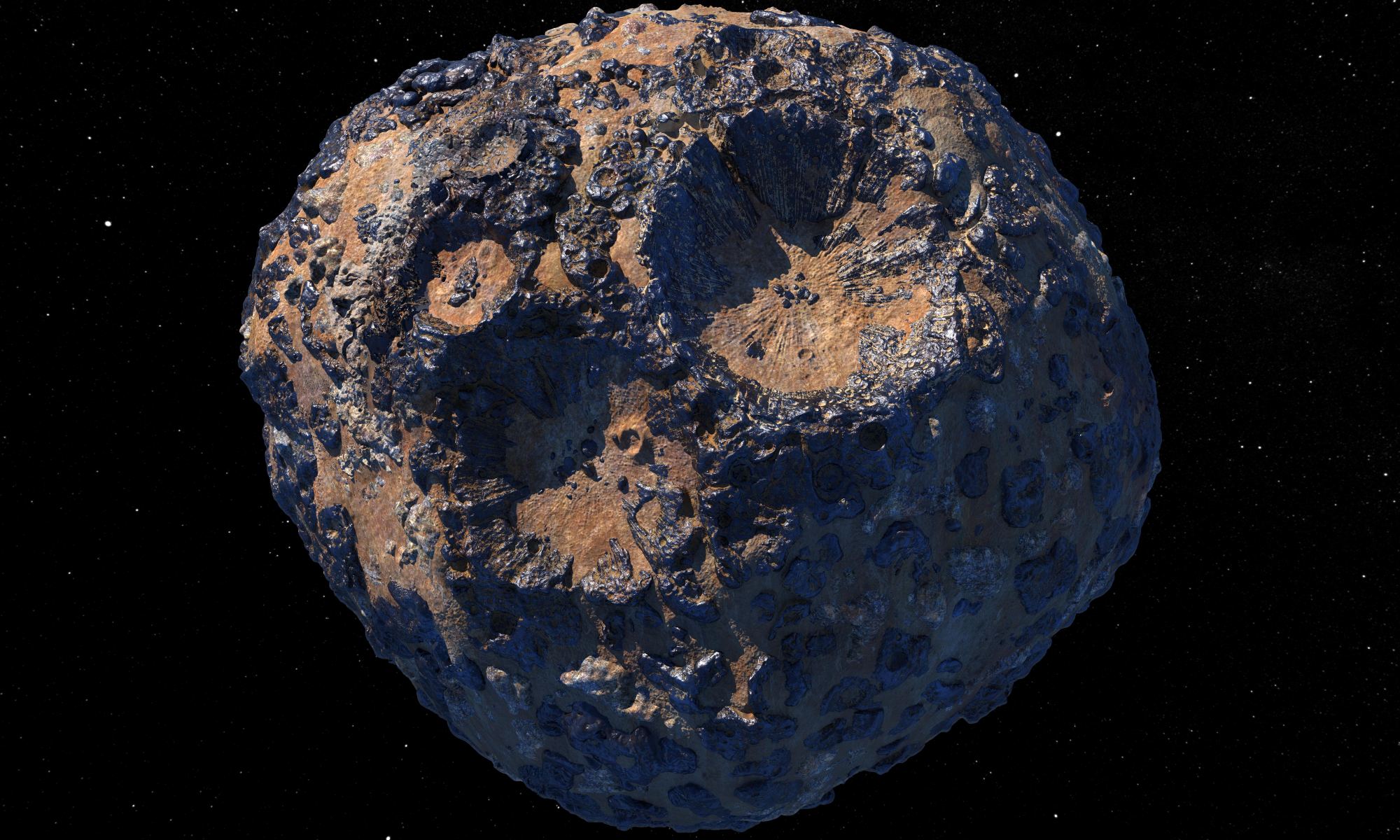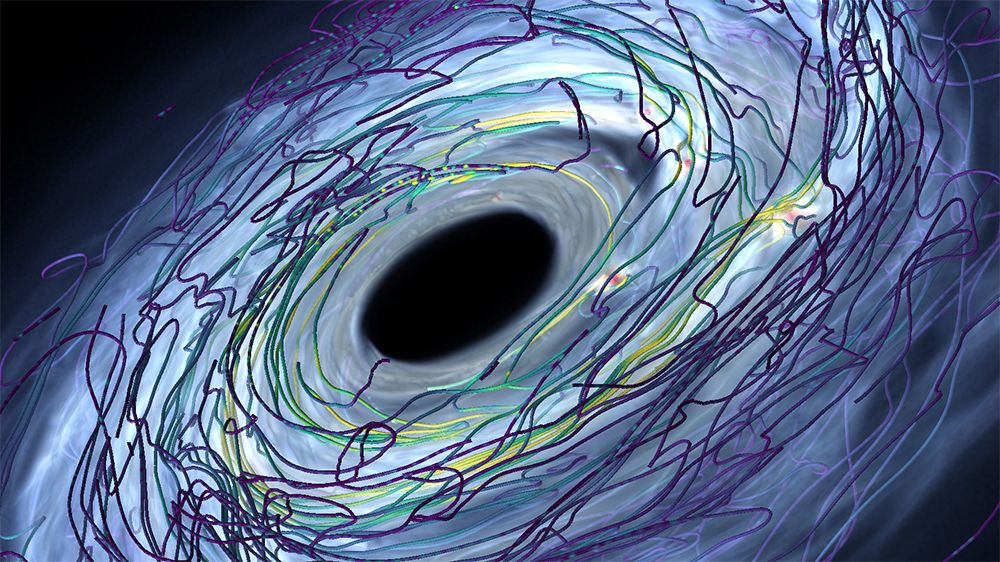One of the striking things about iron meteorites is that they are often magnetic. The magnetism isn’t strong, but it holds information about their origin. This is why astronomers discourage meteorite hunters from using magnets to distinguish meteorites from the surrounding rock, since hand magnets can erase the magnetic history of a meteorite, which is an important scientific record.
Continue reading “Some Metal Meteorites Have a Tiny Magnetic Field. But How?”The Strange Swirls on the Lunar Surface are Somehow Related to Topography
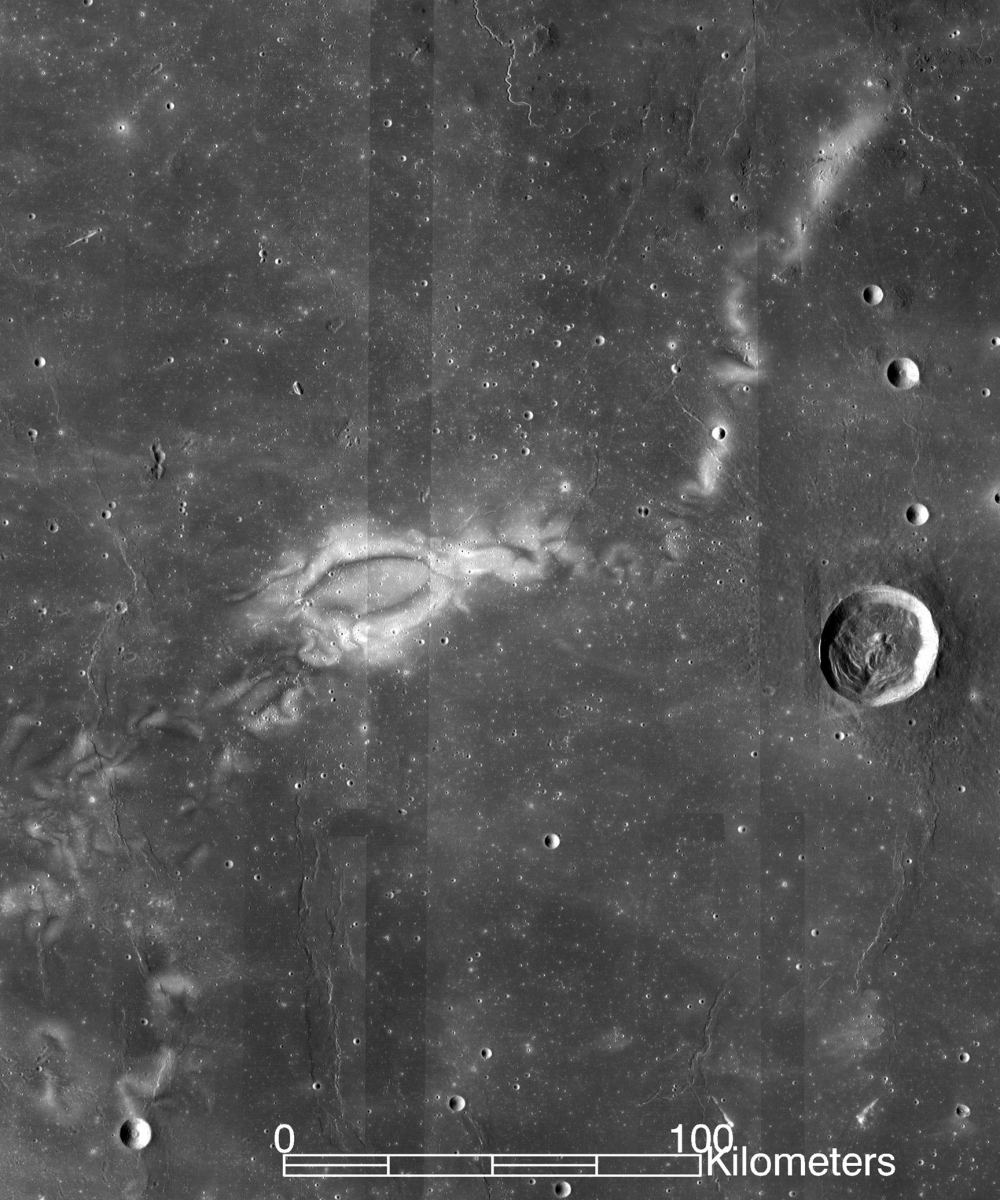
The Moon is the most studied object in space. But our nearest neighbour still holds a few mysteries. One of those mysteries is the lunar swirls. These strange serpentine features are brighter than their surroundings and are much younger. They’re not associated with any specific composition of lunar rock, and they appear to overlay other surface features like craters and ejecta.
Scientists have been puzzling over the swirls for decades, and with lunar outposts looming as a real possibility, understanding these swirls takes on new importance. Now a new study finds a link between lunar topography and the swirls.
Continue reading “The Strange Swirls on the Lunar Surface are Somehow Related to Topography”A Magnetic Tunnel Surrounds the Earth

What if our eyes could see radio waves?
If we could, we might be able to look up into the sky and see a tunnel of rope-like filaments made of radio waves. The structure would be about 1,000 light-years long and would be about 350 light-years away.
This tunnel explains two of the brightest radio features in the sky.
Continue reading “A Magnetic Tunnel Surrounds the Earth”Magnetic Fields Help Shape the Formation of New Planets
In all of scientific modeling, the models attempting to replicate planetary and solar system formation are some of the most complicated. They are also notoriously difficult to develop. Normally they center around one of two formative ideas: planets are shaped primarily by gravity or planets are shaped primarily by magnetism. Now a new theoretical model has been developed by a team at the University of Zurich (UZH) that uses math from both methodologies to inform the most complete model yet of planetary formation.
Continue reading “Magnetic Fields Help Shape the Formation of New Planets”Solar Storms Might Confuse Whale Navigation, and Make Them More Likely to Strand Themselves

The Gray Whale is the 10th largest creature alive today, and the 9 creatures larger than it are all whales, too. Gray Whales are known for their epic migration routes, sometimes covering more than 16,000 km (10,000 miles) on their two-way trips between their feeding grounds and their breeding grounds. Researchers don’t have a complete understanding of how whales navigate these great distances, but some evidence suggests that Earth’s magnetism has something to do with it.
Continue reading “Solar Storms Might Confuse Whale Navigation, and Make Them More Likely to Strand Themselves”What Are The Uses Of Electromagnets?
Electromagnetism is one of the fundamental forces of the universe, responsible for everything from electric and magnetic fields to light. Originally, scientists believed that magnetism and electricity were separate forces. But by the late 19th century, this view changed, as research demonstrated conclusively that positive and negative electrical charges were governed by one force (i.e. magnetism).
Since that time, scientists have sought to test and measure electromagnetic fields, and to recreate them. Towards this end, they created electromagnets, a device that uses electrical current to induce a magnetic field. And since their initial invention as a scientific instrument, electromagnets have gone on to become a regular feature of electronic devices and industrial processes.
Watch an Enormous “Plasma Snake” Erupt from the Sun
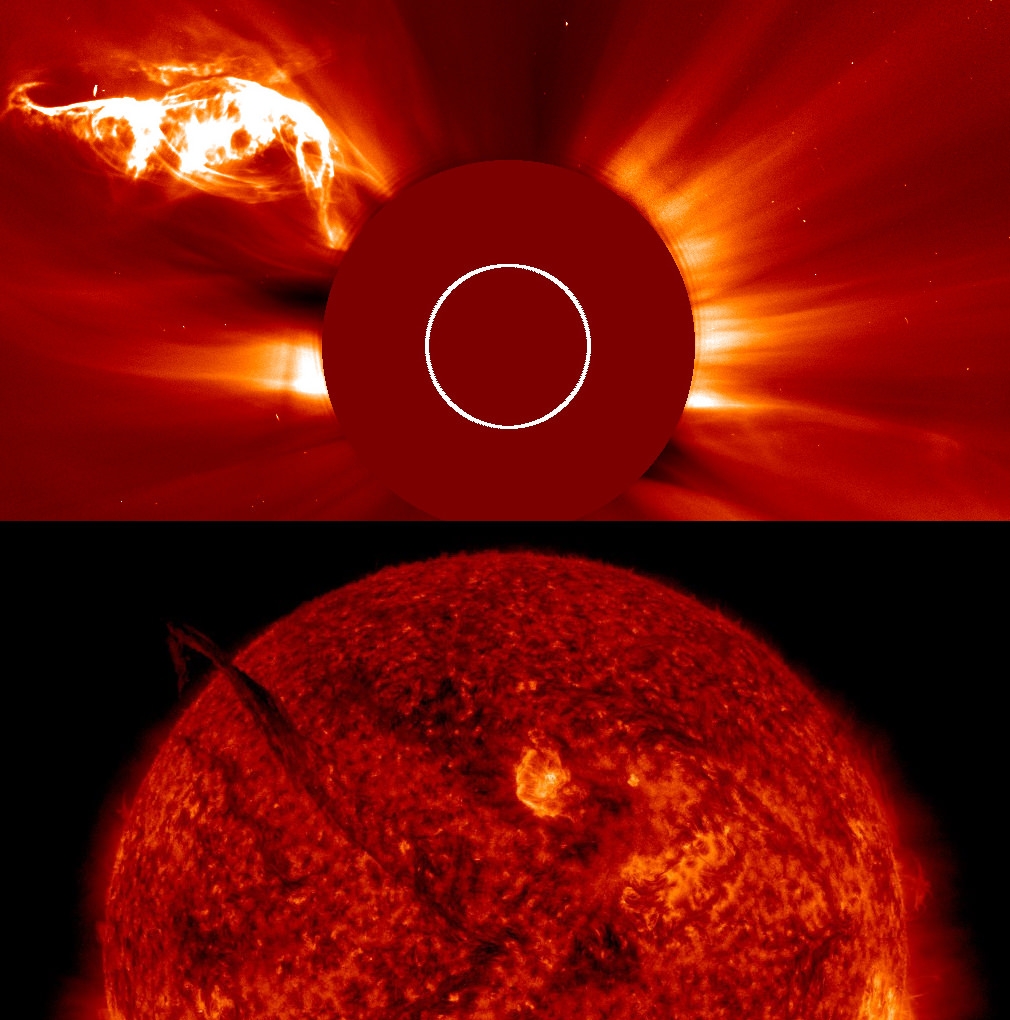
Over the course of April 28–29 a gigantic filament, briefly suspended above the surface* of the Sun, broke off and created an enormous snakelike eruption of plasma that extended millions of miles out into space. The event was both powerful and beautiful, another demonstration of the incredible energy and activity of our home star…and it was all captured on camera by two of our finest Sun-watching spacecraft.
Watch a video of the event below.
Made from data acquired by both NASA’s Solar Dynamics Observatory (SDO) and the joint ESA/NASA SOHO spacecraft, the video was compiled by astronomer and sungrazing comet specialist Karl Battams. It shows views of the huge filament before and after detaching from the Sun, and gives a sense of the enormous scale of the event.
At one point the plasma eruption spanned a distance over 33 times farther than the Moon is from Earth!
Filaments are long channels of solar material contained by magnetic fields that have risen up from within the Sun. They are relatively cooler than the visible face of the Sun behind them so they appear dark when silhouetted against it; when seen rising from the Sun’s limb they look bright and are called prominences.
When the magnetic field lines break apart, much of the material contained within the filaments gets flung out into space (a.k.a. a CME) while some gets pulled back down into the Sun. These events are fairly common but that doesn’t make them any less spectacular!
Also read: Watch the Sun Split Apart
This same particularly long filament has also been featured as the Astronomy Picture of the Day (APOD), in a photo captured on April 27 by Göran Strand.
For more solar news follow Karl Battams on Twitter.
Image credits: ESA/NASA/SOHO & SDO/NASA and the AIA science team.
*The Sun, being a mass of incandescent gas, doesn’t have a “surface” like rocky planets do so in this case we’re referring to its photosphere and chromosphere.
What Is The Big Rip?
Dr. Thad Szabo is a professor of physics and astronomy at Cerritos College. He’s also a regular contributor to many of our projects, like the Virtual Star Party and the Weekly Space Hangout. Thad has an encyclopedic knowledge of all things space, so we got him to explain a few fascinating concepts.
In this video, Thad explains the strange mystery of dark energy, and the even stranger idea of the Big Rip.
What is the ‘Big Rip?’
If we look at the expansion of the universe, at first it was thought that, as things are expanding while objects have mass, the mass is going to be attracted to other mass, and that should slow the expansion. Then, in the late 1990’s, you have the supernova surveys that are looking deeper into space than we’ve ever looked before, and measuring distances accurately to greater distances than we’ve ever seen before. Something really surprising came out, and that was what we’ll now use “dark energy” now to explain, and that is that the acceleration is not actually slowing down – it’s not even stopped. It’s actually getting faster, and if you look at the most distant objects, they’re actually moving away from us and the acceleration is increasing the acceleration of expansion. This is actually a huge result.
One of the ideas of trying to explain it is to use the “cosmological constant,” which is something that Einstein actually introduced to his field equations to try to keep the universe the same size. He didn’t like the idea of a universe changing, so he just kind of cooked up this term and threw it into the equations to say, alright, well if it isn’t supposed to expand or contract, if I make this little mathematical adjustment, it stays the same size.
Hubble comes along about ten years later, and is observing galaxies and measuring their red shifts and their distances, and says wait a minute – no the universe is expanding. And actually we should really credit that to Georges Lemaître, who was able to interpret Hubble’s data to come up with the idea of what we now call the Big Bang.
So, the expansion’s happening – wait, it’s getting faster. And now the attempt is to try to understand how dark energy works. Right now, most of the evidence points to this idea that the expansion will continue in the space between galaxies. That the forces of gravity, and especially magnetism and the strong nuclear force that holds protons and neutrons together in the center of an atom, would be strong enough that dark energy is never going to be able to pull those objects apart.
However, there’s a possibility that it doesn’t work like that. There’s actually a little bit of experimental evidence right now that, although it’s not well-established, that there’s a little bit of a bias with certain experiments that dark energy may get stronger over time. And, if it does so, the distances won’t matter – that any object will be pulled apart. So first, you will see all galaxies recede from each other, as space starts to grow bigger and bigger, faster and faster. Then the galaxies will start to be pulled apart. Then star systems, then planets from their stars, then stars themselves, and then other objects that would typically be held together by the much stronger forces, the electromagnetic force objects held by that will be pulled apart, and then eventually, nuclei in atoms.
So if dark energy behaves so that it gets stronger and stronger over time, it will eventually overcome everything, and you’ll have a universe with nothing left. That’s the ‘Big Rip’ – if dark energy gets stronger and stronger over time, it will eventually overcome any forces of attraction, and then everything is torn apart.
You can find more information from Dr. Thad Szabo at his YouTube channel.
Why the North Pole Is Really a South Pole (and Vice Versa)
If you go out hiking this weekend and somehow find yourself hopelessly lost in the wilderness, but suddenly remember you have a compass with you, you can use it to find north because the needle always points towards the Earth’s geographic north pole, which never changes… right?
Wrong, wrong, and wrong. And this video from MinutePhysics explains why.
(But still bring a compass with you. They do come in handy.)
The Milky Way’s Magnetic Personality
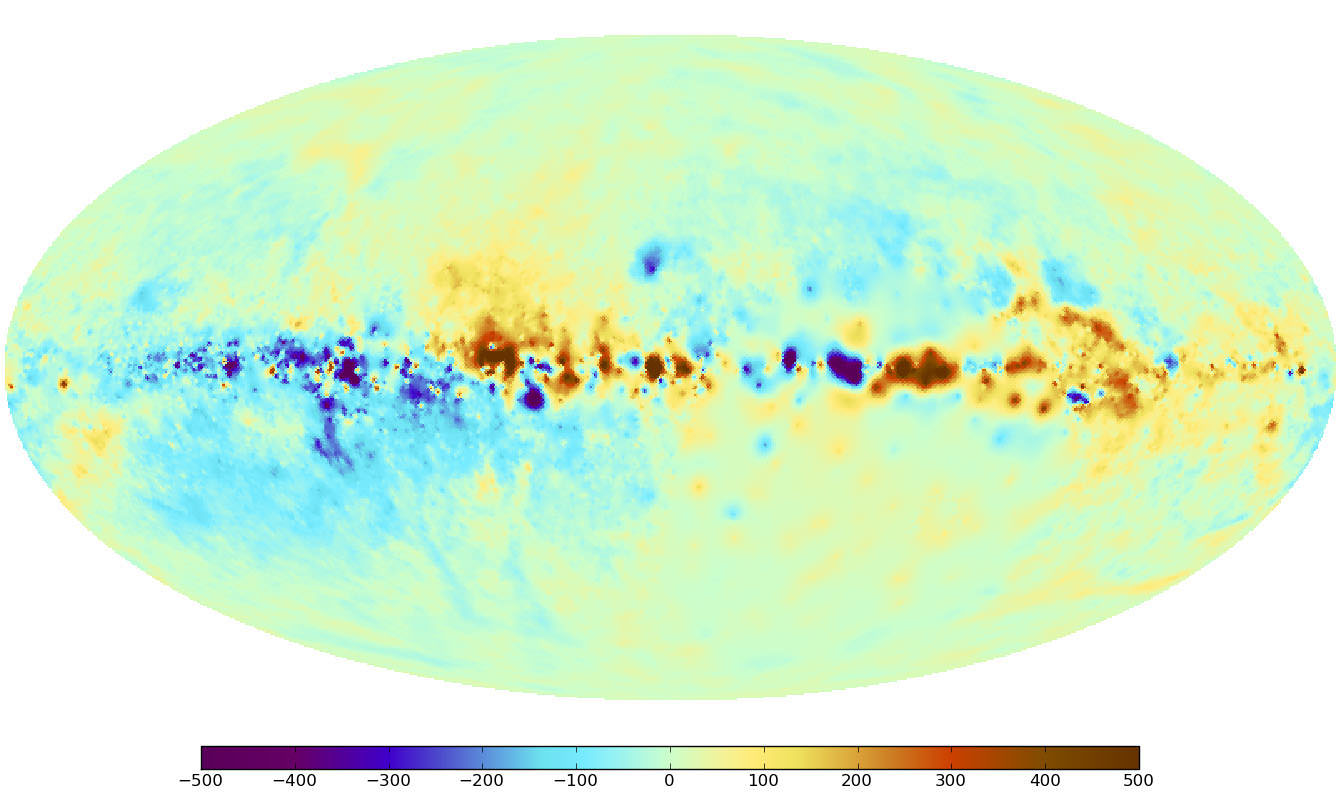
[/caption]
Recently we took a look at a very unusual type of map – the Faraday Sky. Now an international team of scientists, including those at the Naval Research Laboratory, have pooled their information and created one of the most high precision maps to date of the Milky Way’s magnetic fields. Like all galaxies, ours has a magnetic “personality”, but just where these fields come from and how they are created is a genuine mystery. Researchers have always simply assumed they were created by mechanical processes like those which occur in Earth’s interior and the Sun. Now a new study will give scientists an even better understanding about the structure of galactic magnetic fields as seen throughout our galaxy.
The team, led by the Max Planck Institute for Astrophysics (MPA), gathered their information and compiled it with theoretical simulations to create yet another detailed map of the magnetic sky. As NRL’s Dr. Tracy Clarke, a member of the research team explains, “The key to applying these new techniques is that this project brings together over 30 researchers with 26 different projects and more than 41,000 measurements across the sky. The resulting database is equivalent to peppering the entire sky with sources separated by an angular distance of two full moons.” This huge amount of data provides a new “all-sky” look which will enable scientists to measure the magnetic structure of the Milky Way in minute detail.
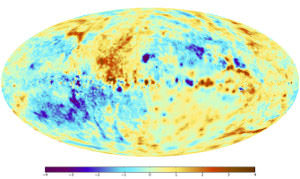
The concept of the Faraday effect isn’t new. Scientists have been observing and measuring these fields for the last century and a half. Just how is it done? When polarized light passes through a magnetized medium, the plane of the polarization flips… a process known as Faraday rotation. The amount of rotation shows the direction and strength of the field and thereby its properties. Polarized light is also generated from radio sources. By using different frequencies, the Faraday rotation can also be measured in this alternative way. By combining all of these unique measurements, researchers can acquire information about a single path through the Milky Way. To further enhance the “big picture”, information must be gathered from a variety of sources – a need filled by 26 different observing projects that netted a total of 41,330 individual measurements. To give you a clue of the size, that ends up being about one radio source per square degree of sky!
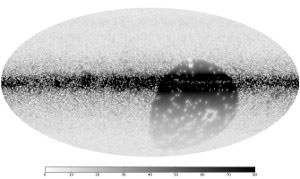
Thanks to an algorithm crafted by the MPA, scientists are able to face these types of difficulties with confidence as they put together the images. The algorithm, called the “extended critical filter,” employs tools from new disciplines known as information field theory – a logical and statistical method applied to fields. So far it has proven to be an effective method of weeding out errors and has even proven itself to be an asset to other scientific fields such as medicine or geography for a range of image and signal-processing applications.
Even though this new map is a great assistant for studying our own galaxy, it will help pave the way for researchers studying extragalactic magnetic fields as well. As the future provides new types of radio telescopes such as LOFAR, eVLA, ASKAP, MeerKAT and the SKA , the map will be a major resource of measurements of the Faraday effect – allowing scientists to update the image and further our understanding of the origin of galactic magnetic fields.
Original Story Source: Naval Research Laboratory News.

